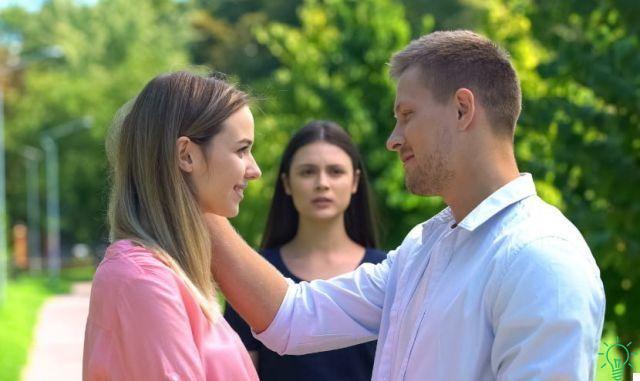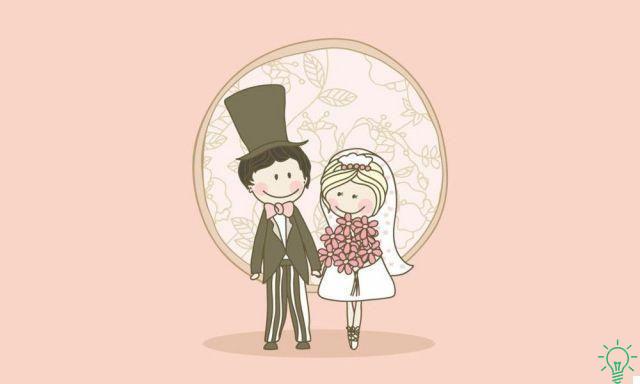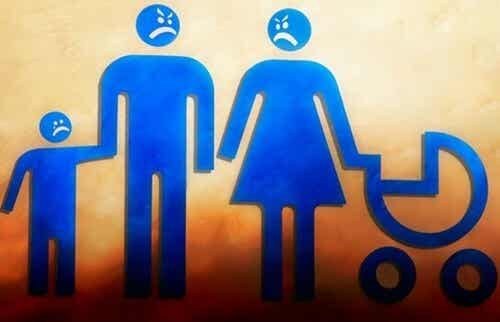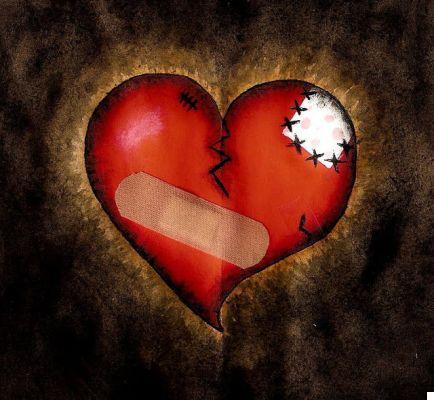Anthropologist Hellen Fisher explains that love can manifest itself in different forms. But how many types of love are there?

Last update: 13 November 2022
To answer, we will take as a reference point the theory developed over two decades ago by the anthropologist Hellen Fisher, whose research is still ongoing and does not cease to surprise us. In this picture, it would seem three brain systems that give rise to as many different types of love. We are talking about the sex drive, romantic love and deep attachment.
Compared to romantic love, we seem to be able to feel interest and attraction for more than one person at the same time. This is thanks to the neurobiology of love. It is therefore important to know how this cocktail of hormones affects us in order to better understand our "emotional fluctuations".
This gives us many guidelines to understand the origin of that struggle we sometimes wage between what we want and what we think is best for us. The theory of the different types of love it helps us to transform some of the faults that haunt us like shadows and to understand who we love, how we love and why we love.
The sexual impulse, the first of the three types of love
It affects both men and women. We are looking for unpretentious sexual gratification for the future. When someone sexually attracts us, a completely physical and psychological process develops. There is an increase in systolic blood pressure, we release sugars and fats, and the production of red blood cells increases. In addition, important neuronal and hormonal alterations come into play.
This urge is as primal a need as hunger and thirst are. It originates in the hypothalamus, the organ that controls the most basic behaviors. The brain, in this phase, mainly produces dopamine, endorphins, adrenaline and noradrenaline. The latter is responsible for our attraction to certain people. It clouds our judgment and increases risk tolerance in order to satisfy our desires.
Romantic love
Today we know that romantic love is not an emotion. Rather, it is a drive, an impulse. In fact, it is one of the most powerful impulses of the human being and that makes us want to see or be with a specific person and only with her. It has the same effect on the brain as substances such as cocaine and produces activity in the ventral tegmental area and in the caudate nucleus.
Both of these areas are connected to the basic reward and motivation system. Let's talk about the reptilian brain. The same chemical combination is produced as drug addicts, especially with regards to dopamine levels. Furthermore, there is an area of the brain that becomes deactivated in this condition of romantic love: a part of the amygdala associated with fear. For this reason, perhaps, it is said that "love is blind".
Thanks to various researches it has been observed that when we experience a feeling of rejection, the activity of the reward system in the nucleus accumbens continues, as happens with addictive behaviors. In addition, there is activity in the lateral orbitofrontal cortex, associated with obsessive thoughts, and in the insular cortex, associated with physical pain.
As with the sexual impulse, the mechanisms activated by romantic love they apply to both men and women, although some differences have been found in romantic love. In men, a greater number of areas associated with the integration of visual stimuli are activated, while in women mainly the areas responsible for memory are activated.
Deep bond or affection
It occurs as a result of the stabilization of the chemical explosion in the brain, produced by romantic love. Seems to be oriented to bring the couple relationship to a long-term project.
In this state the testosterone levels in men are lowered and in women they rise. This would seem to facilitate coexistence. The ventral pale is activated, an area of the brain associated with the sense of comfort and pleasure, resulting in feelings of calm and stability.
Not to get confused with the 3 types of love
To sum up, it is possible to go to sleep one night with deep affection and attachment to the person next to us, just as it can happen that our mind wanders, madly in love with another person, and even feels purely sexual attraction for a third person. That is to say, the three loves could take place at the same time, but towards different objects of desire.
Dr. Fisher's theories have been accused of being reductionist in some respects, but there is no doubt of the value of the reflection they invite us to do. Thanks to these research studies, we know better the association between our organism and our emotional life. If we are able to understand these processes and their functioning, it may be easier for us to put our ideas in order, to know the place each person occupies in our life and why; and managing our more instinctive inclinations so as not to let them control our lives will be.


























